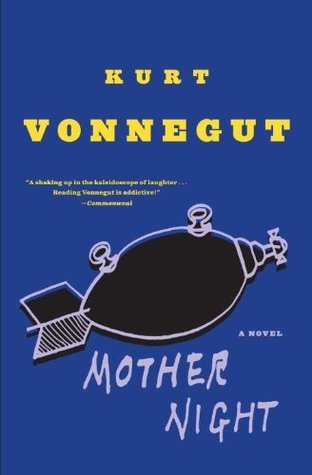Chapter 41: Chemicals …
byIn Chapter 41 of Mother Night, the protagonist walks from the Empire State Building toward his old home in Greenwich Village, taking in his surroundings and reflecting on his life. As he walks, he smokes a cigarette, drawing parallels between himself and a “lightning bug,” a symbol of his attempt to connect with others. The idea of being like a lightning bug reflects his longing for meaningful human connection amidst the isolation he feels. As night falls, the protagonist observes the solitary lights in upper-story windows, particularly the glowing light of Dr. Abraham Epstein, another figure who, like him, is symbolized as a “lightning bug.” The image of these solitary lights in the darkness emphasizes a sense of shared yet distant lives, with each individual living their own narrative, yet somehow still connected through the metaphor of light.
The protagonist arrives at his building, where he is confronted by a dark and broken entrance, symbolizing the decay and disrepair that parallels his own inner state. A patrolman approaches him, and they engage in a conversation that begins on a surface level but gradually uncovers shared sentiments and experiences. The protagonist shows his identification and casually discusses his return to his home, despite the troubling circumstances surrounding him. The patrolman, though initially surprised, recognizes the protagonist’s right to be there, illustrating a blend of duty and a shared sense of camaraderie. This brief interaction between them highlights how, despite the alienation each person might feel, moments of understanding and mutual recognition can still occur. It subtly hints at the human need for connection and understanding, even in mundane encounters, as both men navigate their own personal struggles.
As the conversation deepens, the dialogue shifts toward broader themes of society, grief, and the nature of humanity. The patrolman shares the deeply personal loss of his father, who died at Iwo Jima, using this grief to reflect on the shared suffering of people on both sides of the conflict. This exchange leads them to speculate on the inevitability of another war, with both men anticipating it as an unfortunate but probable future. Their discussion touches on the cyclical nature of human suffering, and how past wars shape the actions and attitudes of individuals long after the conflicts have ended. The protagonist listens, contemplating the shared human experience of grief and loss, which transcends nationalities and becomes a universal bond. Their conversation serves as a reminder that personal history often intersects with the collective, creating a complex web of experiences that shape individuals in profound ways.
The patrolman then expresses his pessimism about human behavior, lamenting that many people have little respect for the law or the larger societal structures meant to maintain order. The protagonist responds by encouraging him, suggesting that even small actions contribute to the larger picture. This discussion serves as an exploration of human behavior and societal structures, touching on the complexities of how individuals interact with the rules that govern their lives. Their talk shifts toward the idea of “chemicals” influencing behavior, suggesting that perhaps human actions and societal issues are rooted in chemical imbalances, affecting moods and actions in unpredictable ways. This exploration of chemicals as an underlying cause for behavior adds a layer of complexity to their discussion, considering how scientific factors might contribute to broader societal patterns of behavior.
The patrolman continues to reflect on his brother’s experiences in Japan, using these personal memories to contemplate the nature of humanity. He questions whether human actions are shaped more by environmental factors or by inherent biological and chemical conditions. Both men consider the possibility that human actions are influenced by a combination of internal chemistry and external circumstances, acknowledging that the complexities of behavior often lead to irrational or harmful outcomes. Their discussion touches on the way societal structures, personal experiences, and biological influences intersect to shape human behavior. They specifically reference how emotions, especially those tied to biology and hormonal imbalances, can influence behavior, particularly in women, offering a view on how deeply human nature is affected by both nature and nurture. The chapter ends with both men pondering these larger questions, allowing the reader to reflect on how personal experiences, chemical imbalances, and societal pressures combine to form the intricate tapestry of the human condition. Through their conversation, the complexities of individual choices within the collective struggles of humanity are laid bare.

